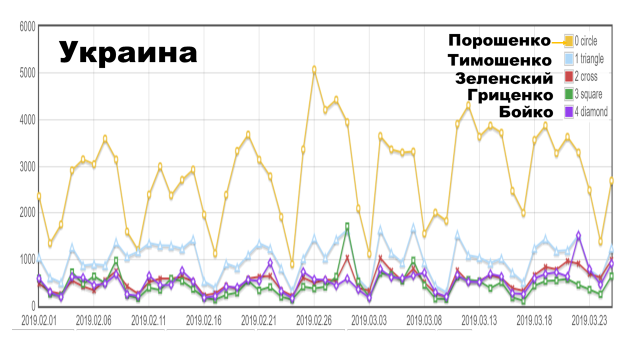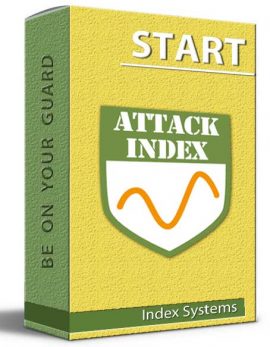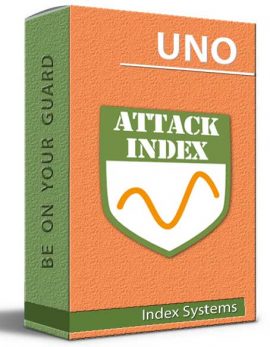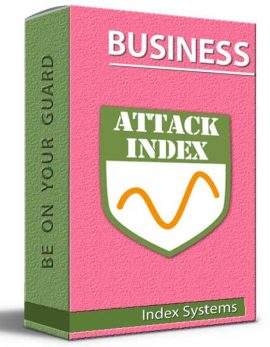Citizens of Ukraine receive information about the presidential campaign from the media. Many people learn about elections from TV, but some studies say that only a third of citizens trust this source. The nature of global media consumption today is such that almost all content is present on the Internet in one way or another. Many media outlets draw their content from content sites and are of far from the best quality. As a result, citizens of Ukraine form their ideas about candidates from sources of different quality, through dubious filters and in an extremely unpredictable interpretation. In the current campaign – also from comedy, but this is the subject of other analyzes and examinations.
We present a small study – more than 10,000 sites of the Ukrainian and Russian segment of the Internet over the past year in the context of the media position of candidates for the presidency of Ukraine. Perhaps some facts will help to achieve a better understanding of the portraits of candidates to voters and make informed decisions on March 31st.
Elections as an informational occasion
One of the most important issues is the existence of an information policy of contenders for the presidency. Precisely, availability: to what extent candidates are able to create their own informational occasions, alternative political solutions, accompany discussions and offer scenarios ahead of their rivals. The presence of media content among candidates directly changed the preference ratings of Ukrainian voters, even if this very content does not belong to the classic pre-election content.
Unfortunately, the study of topics and plots related to each election in 2019 creates a strong impression that the media are more interested in writing about the candidates than they are. Moreover, journalists and content generators manage with little – reprinting programs and quotes, simply catching up with traffic. Consumers rush to every possible way to get information. And she is not. There are election slogans, carefully articulated accusations of each other, compromising evidence and derogatory ratings of rivals
It is obvious that the closer to the date of the presidential elections in Ukraine, the more publications appear with the raising of economics, war, international politics and other sensitive topics. Including them in their election campaigns, candidates regularly appear on various television and radio channels and appear in print and online media.
After analyzing the dynamics of publications over the past year, which became informational and preparatory for candidates, as well as the first quarter of 2019, which became the finish line, we were able to see the various activities of all participants in the political race. At the beginning of March, the activity figures look as indicated in the table.
On the left in the column – the number of publications mentioning the candidate for the whole of 2018, on the right – for the period from January to March 2019. The percentage of publications in 2019 to 2018 clearly shows the candidates who have become more active for the election campaign. If for the first quarter of 2019 the percentage value is around 50 or less, then the politician was in the public space in 2018 and was of interest to society. Values greater than 100 indicate that the elections woke up 7 candidates out of 14, i.e. half of the leaders repeated the annual figures for the pre-election quarter.
Four of them are engaged exclusively in pre-election activities – Zelensky, Koshulinsky, Balashov and Smeshko – we can say that they have soared above themselves, demonstrating activities several times higher than their usual informational state. Perhaps without elections, some applicants had nothing to say at all.
|
|
|
2018 |
2019 |
% 2019 к 2018 |
|
1 |
Петр Порошенко |
706 298 |
262 376 |
37 |
|
2 |
Юлия Тимошенко |
206 251 |
83 952 |
41 |
|
3 |
Владимир Зеленский |
18 897 |
48 413 |
256 |
|
4 |
Анатолий Гриценко |
22 006 |
26 876 |
122 |
|
5 |
Олег Ляшко |
47 126 |
18 652 |
40 |
|
6 |
Юрий Бойко |
28 548 |
14 949 |
52 |
|
7 |
Александр Вилкул |
19 450 |
14 489 |
74 |
|
8 |
Евгений Мураев |
8 403 |
6 559 |
78 |
|
9 |
Валентин Наливайченко |
6 153 |
6 630 |
108 |
|
10 |
Сергей Тарута |
5 283 |
3 463 |
66 |
|
11 |
Ольга Богомолец |
5 992 |
4 294 |
72 |
|
12 |
Александр Шевченко |
4 714 |
7 005 |
149 |
|
13 |
Геннадий Балашов |
514 |
3 245 |
631 |
|
14 |
Руслан Кошулинский |
568 |
1 530 |
269 |
|
15 |
Игорь Смешко |
457 |
2 668 |
584 |
It is obvious that the current president, even without the pre-election race, appears in many stories about the events in Ukraine. Several other candidates also do not think of passivity in the information field and keep their names well known. An interesting trend begins already with the 3rd position, Volodymyr Zelensky, the number of mentions of which in the first quarter of 2019 exceeds the activity for the entire previous year.
From the 4th to the 8th position, one can evaluate the dynamics of texts from public, but less active, persons. Here the distribution is already more natural, based on the time period. In a year, we managed to publish more notes and news than in 3 months.
Already from the 9th and 10th positions, the trend becomes inversely proportional. The activation in the information field towards the end of the election program is clearly visible. It should be noted that this is observed both for already well-known persons and for new persons who represent their political parties in the presidential elections in Ukraine.
Terminology Crimea – Donbass
One of the main roles of the future president of Ukraine is the Supreme Commander. The political role of the Supreme Commander is to clearly articulate the position of Ukraine in relation to the aggression of the Russian Federation, the choice of allies, the development of the path to NATO and the name of the possible next format of negotiations on the liberation of Ukrainian territories. It is the representation of this role in the media that we will try to sort out.
Moving from quantitative assessment to topics, we have selected publications with the most pressing topics. They will certainly become the main agenda for the future president. How each candidate sees the solution of the issue with Crimea and Donbass can be assessed by the political programs of the candidates and their comments in the media. Journalists have already done this quite successfully by publishing more than one article about the vision of the future by political figures in relations with the West and Russia.
Generally speaking, the groups of candidates are divided into those who talk about drastic measures, including the military resolution of the conflict with or without the help of the world community, and those who plan to resolve it “peacefully” through negotiations.
It is curious that there is a third, conditionally neutral position, which is explained as an even more active involvement of the West and, at the same time, a ceasefire is a relatively peaceful solution. At the same time, this approach does not specify how exactly the issue of war will be resolved in principle. The rhetoric of both the use of force and diplomacy is embedded in such responses.
With separate requests, we studied the dynamics of publications and mentions of the names of candidates in the context of the military conflict in the East of Ukraine and the annexation of Crimea. On the one hand, these are legitimate questions from journalists about the strategy in relation to these parts of Ukraine. On the other hand, some candidates have published separate statements to indicate their position. So we were able to get a picture of the accents from everyone on the problem of Donbass, Crimea and territorial encroachments in general.
We see that the issue of territorial integrity in general was raised most often by websites featuring Valentin Nalyvaichenko and Alexander Vilkul. As a percentage of the total number of publications, these terms were most often heard by them. Specifically, all candidates, with rare exceptions, talk about Crimea and Donbass with approximately the same frequency.
|
|
|
Крым |
Донбас |
Оккупация, аннексия |
|
1 |
Петр Порошенко |
147 867 |
146 213 |
70 478 |
|
2 |
Юлия Тимошенко |
31 368 |
21 943 |
8 524 |
|
3 |
Владимир Зеленский |
7 118 |
6 559 |
1 983 |
|
4 |
Анатолий Гриценко |
8 475 |
5 939 |
2 156 |
|
5 |
Олег Ляшко |
10 415 |
6 275 |
998 |
|
6 |
Юрий Бойко |
7 666 |
6 508 |
917 |
|
7 |
Александр Вилкул |
4 759 |
4 063 |
1 065 |
|
8 |
Евгений Мураев |
1 964 |
1 881 |
335 |
|
9 |
Валентин Наливайченко |
3 091 |
1 781 |
1 338 |
|
10 |
Сергей Тарута |
545 |
628 |
150 |
|
11 |
Ольга Богомолец |
1 107 |
817 |
107 |
|
12 |
Александр Шевченко |
1 281 |
647 |
74 |
|
13 |
Геннадий Балашов |
508 |
347 |
139 |
|
14 |
Руслан Кошулинский |
1 078 |
755 |
717 |
|
15 |
Игорь Смешко |
501 |
360 |
79 |
However, if we compare these figures with the total number of publications about each participant in the race, we get other accents. Ruslan Koshulinsky, Valentin Nalyvaichenko and Igor Smeshko are leading in terms of frequency. It should be taken into account that Nalyvaichenko and Smeshko often act as experts on geopolitical issues, since both held senior positions in the SBU.
|
|
|
Всего публ. |
% Крым |
% Донбасс |
%, оккупация, аннексия |
|
1 |
Петр Порошенко |
968 674 |
16 |
15 |
7 |
|
2 |
Юлия Тимошенко |
290 203 |
12 |
8 |
3 |
|
3 |
Владимир Зеленский |
67 310 |
12 |
11 |
3 |
|
4 |
Анатолий Гриценко |
48 882 |
18 |
13 |
5 |
|
5 |
Олег Ляшко |
65 778 |
16 |
10 |
2 |
|
6 |
Юрий Бойко |
43 497 |
18 |
15 |
2 |
|
7 |
Александр Вилкул |
33 939 |
14 |
12 |
3 |
|
8 |
Евгений Мураев |
14 962 |
13 |
13 |
2 |
|
9 |
Валентин Наливайченко |
12 783 |
25 |
14 |
11 |
|
10 |
Сергей Тарута |
8 746 |
6 |
7 |
2 |
|
11 |
Ольга Богомолец |
10 286 |
11 |
8 |
1 |
|
12 |
Александр Шевченко |
11 719 |
11 |
6 |
1 |
|
13 |
Геннадий Балашов |
3 759 |
14 |
9 |
4 |
|
14 |
Руслан Кошулинский |
2 098 |
51 |
36 |
15 |
|
15 |
Игорь Смешко |
3 125 |
19 |
14 |
3 |
On the other hand, politicians do not like unambiguous wording, the words “annexation” and “occupation” allow themselves to be used only by the current president Poroshenko, Nalyvaichenko and Koshulinsky. Shameful 1-3% of the rest play best into the hands of the RF tantrums about “anyone but Poroshenko.”
Having a personal policy
Dynamic graphs say – find 5 differences. There are not so many of them. The use of other people’s reasons or mentions of candidates at the same time is clearly visible. The incumbent president is mentioned several times more often and creates reasons more confidently than others. In the Ukrainian Internet space, only Tymoshenko occupies an average position in terms of mention, the rest (Zelensky, Gritsenko and Boyko) have been quite heaped for the last three months and are most often simply present in general election materials, for example, in publications about fresh ratings. Gritsenko is the least written about in Russia, while Zelensky and Boyko are consistently ahead of Tymoshenko, but not dramatically. The nature of the dynamics is so repeated in the Ukrainian and Russian media space that it suggests the absence of special information maneuvers by the aggressor country.


It seems that all forces are thrown at the fifth column in Ukraine, and the existing stuffing and manipulations are enough for the Russian consumer. The specific color created by propagandists for the domestic consumer is based on the theme “not only Poroshenko” and consists of attaching labels, nicknames and conspiracies to any Ukrainian event, including opposition to other representatives of the authorities, aggravation of responsibility and associations with the civil war. It seems that with the latest, the Russian Federation believes that it has already reached perfection and does not consider it necessary to explain to its citizens additionally. It is positive that in the Ukrainian information space there are no such phrases as “civil war” or similar ones.
In February 2019, the circle is all the more focused on the fact that Ukraine has been involved in a conflict with Russia for 5 years. The United States and a number of European countries declare their continued support for our country and the extension of sanctions against Russia.
Presidential candidate Yuriy Boyko gives evaluative comments regarding religion in Ukraine and changes after receiving the Tomos. He talks about the separation of the population on religious grounds and tries to appear in the news with the president. In particular, about sensitive topics related to the Crimea and joining NATO. Yuriy Boyko puts the issue of Donbass first in his election program and adheres exclusively to the “negotiation” side of the process. Boyko regularly appears in the news with Viktor Medvedchuk, who is not running for president but is the godfather of the president of the Russian Federation. The recent visit to Moscow, of course, brightened up the agenda of Ukrainian patriots and the concentration of pro-Russian forces, but the quantity and quality of information policies did not practically change.
The most positive impression from studying the Russian agenda is the possibility of choice and democratic procedures. Their propaganda machine of the Russian Federation could not hide, since all plots are based on the presence of several alternatives, forecasts and scenarios. Even in a stream of braces and apocalyptic conspiracies, Ukraine remains a state where citizens decide who will be president and where the stability of the cemetery is impossible.














